SXV-H9 Guider Tests
The following pictures should illustrate a problem that comes with the optional guider camera of the SXV-H9 ccd camera from StarlightXpress. This guider camera offers a fine way to connect to the PC via the USB port of the SXV-H9 main camera. Only few cables are needed as power and data both uses the same cable. Unfortunately, the guider cam shows a severe limitation concerning its sensitivity.
Following the recent discussion in the SXBoard the uncooled chip in the guider cam adds a prominent noise floor which hampers the use of fainter guide stars for autoguiding the SXV-H9 ccd images. After lots of test series I can definitely say, that the guide star limiting magnitude is in the range of 8 .. 9mag.
Following the inputs of some testers, Terry Platt from StarlightXpress has done some improvements to the SXV software. First, the SXV software allows serial autoguider which is an elementary feature fpr ccd astronomy, and, Terry has added some image-modifing routines. These routines (a dark-fram subtraction and a median filter) should improve the signal-to-noise ratio of the guide stars in the guiders field-of-view.
With these routines the faintest guide star limit can be slightly pushed to magnitudes above 9mag. Nevertheless, the 10mag limit, which is essential for ccd photographical work, cannot be reached. And, the guiding of 9 .. 9.5mag stars still is a difficult procedure as significant (20-50%) number of guide frame exposure is lost due to non-detection of the guide star. In this case there are some erratic corrections based on filter artefacts which ruin the guiding.
And, the median reduces 1pixcel noise, but on the other hand, this filter blurs the point-spread-function of the guide star. This broadening is another disadvantage which reduces the guiding accuracy.
The following picture reveals the sensitivity of the SXV guider. All pictures are acquired with a VC200L f/9 Cassegrain and the SXV guider attached with a Celestron off-axis guider.
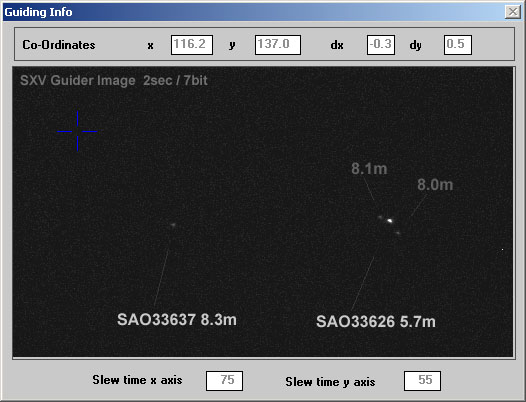
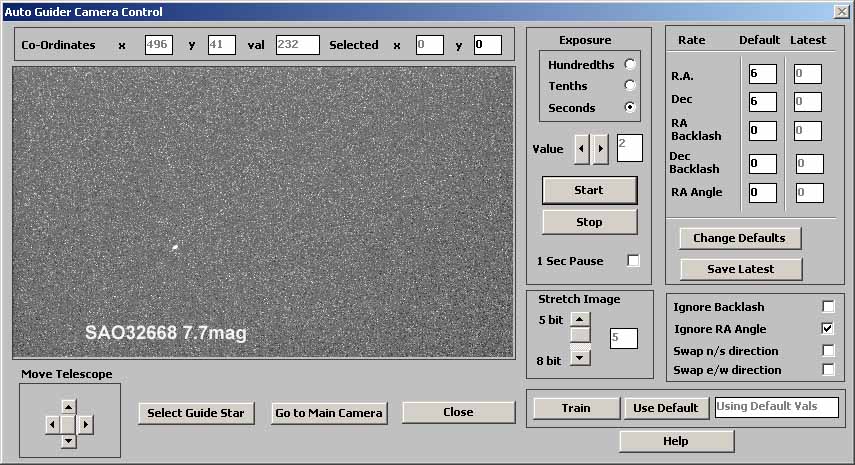
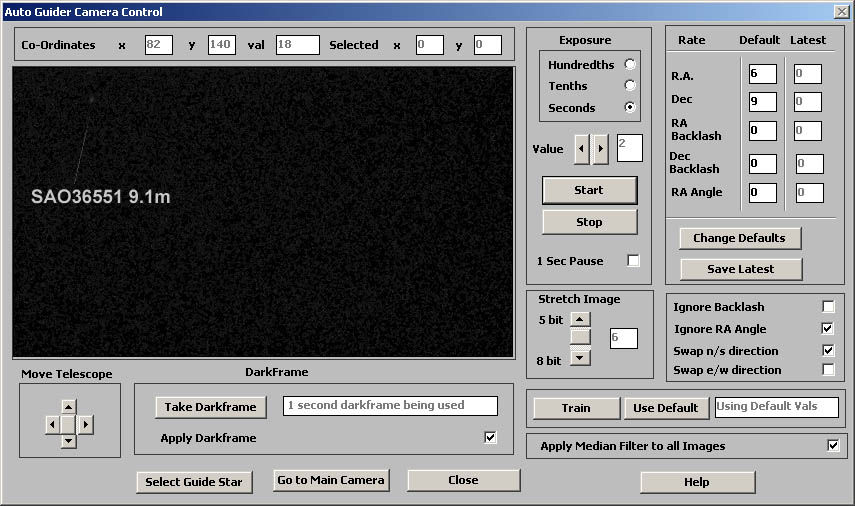
New guider image routines: Darkframe subtraction and Median Filter
The following images shows the differences of the background noise with different exposure times. Furthermore, this comparison shows the results of two new routines. As a test field, a 4.2mag star in NGC6960 was choosen. In the vincinity to this bright star, the guider image show a 8.5mag star (the distance is about 4 arc minutes). The 8.5mag star has a faint companion with 10.5mag. But, this star is not detected with th eguider cam in any of the exposure times.
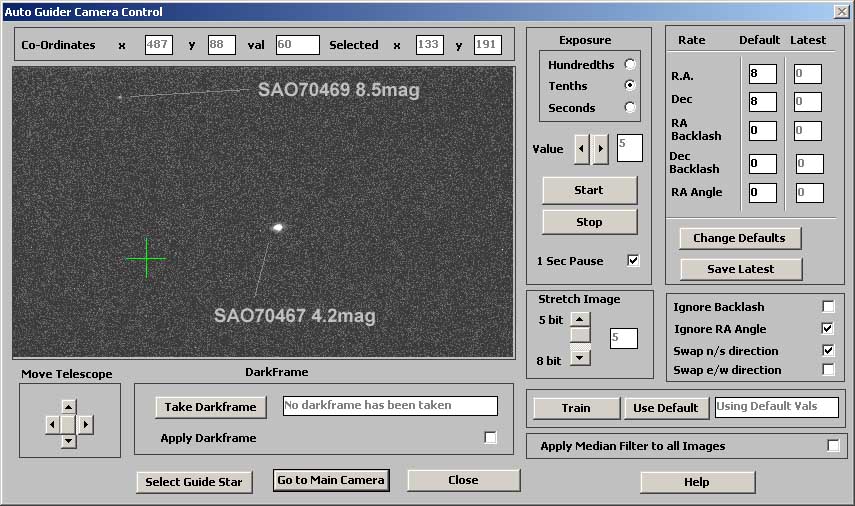
It is interesting, that both stars can be easiliy detected in a 0.5sec exposure. And, the background noise is fairly low, so guiding with both stars is possible. Now, the exposure time is increased 10times to 5 sec.
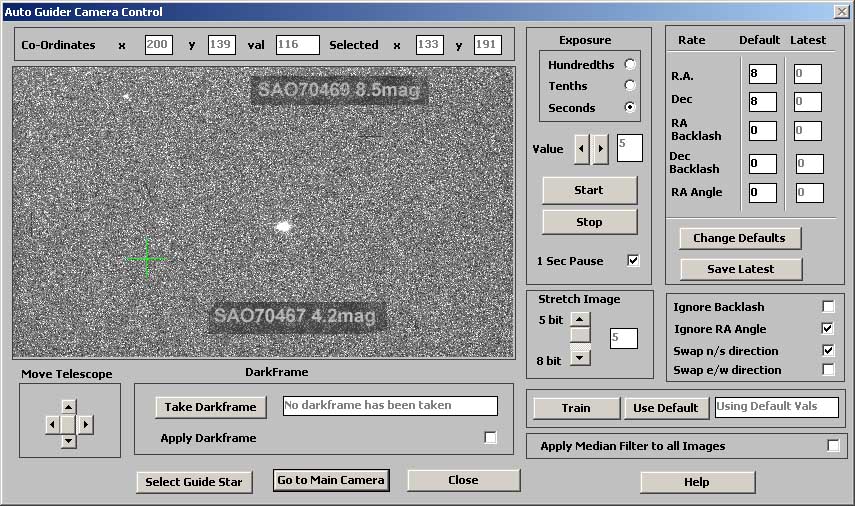
The background noise has becom so strong, that guiding with the faint star yields some minor problems, as 10% of the guiding exposures fail detecting the star in the guide star box. Now the dark frame routine is used. If we use a 5sec dark frame, the resulting image is completely dark, so, we have to use a dark fram from a shorter exposed image. We choose a 1sec dark frame.
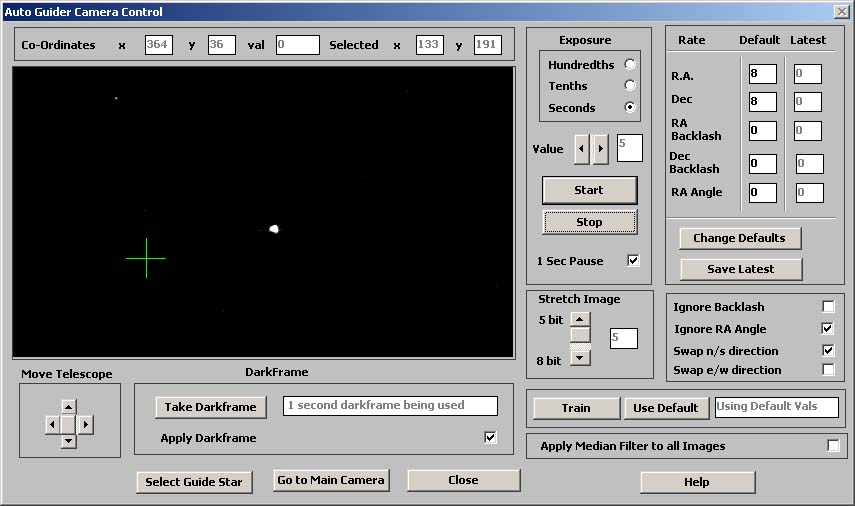
The background noise completely vanished. But, as a comparison to the first 0.5sec image brings it up, the sensitivity is still to low to detect any fainter stars. With this setup, guiding works well. Now, lets apply the second routine, the median filter to the image.
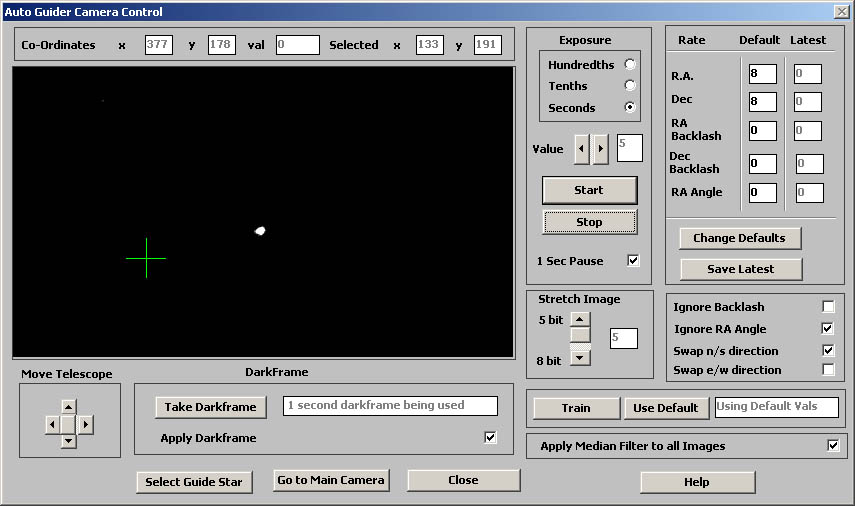
The 8.5mag star was nearly removed by the median filter. In this case, the guiding with the 8.5mag star reveals bigger problems, as 50% of the exposures cannot detect the star. The weakness of the 8.5mag star is no (!) JPG artefact. I have checked various JPG file sizes, all showing the razor effect of the median filter.
Conclusion
The tests still hold on, but as a first result, the lack of sensitivity is definitely the biggest disadvantage of the SXV guider. And, the resulting „brighter-than-10mag“ limit is a severe obstacle to ccd astronomers. None of us wants to choose the ccd objects by nearby 8..9mag stars.
In the next days, I will test a Mintron video camera (by W.Ransburg from Teleskop-Service) as an alternative guider in combination with the SXV-H9 main ccd camera.